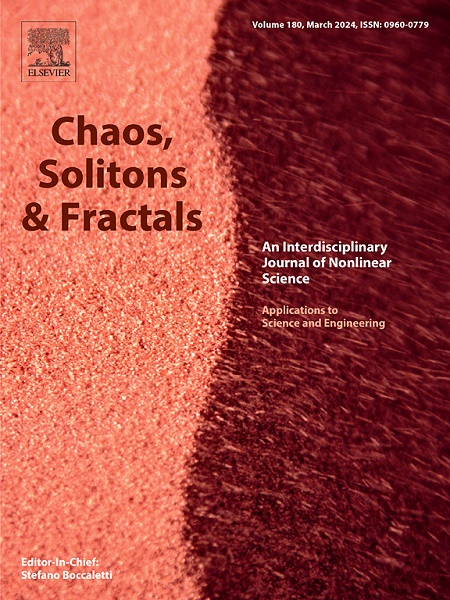Self-oscillation of a liquid crystal elastomer fiber-shading laminate system under line illumination
IF 5.6
1区 数学
Q1 MATHEMATICS, INTERDISCIPLINARY APPLICATIONS
引用次数: 0
Abstract
Light-driven self-sustained systems are widely utilized in various applications, and constructing a self-sustained system typically necessitates a spatially non-uniform light field, which can be challenging to establish and often leads to insufficient light utilization. In this paper, we construct a self-oscillating liquid crystal elastomer fiber-shading laminate system under line illumination, which is modulated through a shading laminate with varying transmittance to achieve a displacement-dependent light field illuminated on the liquid crystal elastomer fiber. We present the general governing equations, then derive their asymptotic equations under shorter characteristic time conditions, conduct a bifurcation analysis and obtain analytical expressions for the amplitude and frequency of the self-oscillations. Furthermore, the influences of different system parameters on the bifurcation point, amplitude, and frequency are examined. The consistency between the numerical and analytical solutions of the system proves the reliability of the derivation. The use of the shading laminate provides a simple feedback mechanism, which makes the light field modulation more flexible, while concentrating the light on the liquid crystal elastomer fiber improves energy utilization. This provides convenience and guidance for various applications including autonomous, highly controlled light-driven soft robotics, energy harvesting, micromechanics, and other related fields.
线照明下液晶弹性体-遮光层压板系统的自振荡
光驱动自维持系统广泛应用于各种应用中,构建自维持系统通常需要空间非均匀的光场,这对建立具有挑战性,并且经常导致光利用率不足。本文构造了一种在线照明下的自振荡液晶弹性体纤维-遮光层压板系统,该系统通过改变透光率的遮光层压板进行调制,从而实现了与位移相关的光场照射在液晶弹性体纤维上。首先给出了一般控制方程,然后推导了它们在较短特征时间条件下的渐近方程,并进行了分岔分析,得到了自振荡的幅值和频率的解析表达式。分析了不同系统参数对分岔点、幅值和频率的影响。系统的数值解与解析解的一致性证明了推导的可靠性。遮阳层压板的使用提供了一种简单的反馈机制,使光场调制更加灵活,同时将光集中在液晶弹性体纤维上,提高了能量利用率。这为各种应用提供了便利和指导,包括自主,高度控制的光驱动软机器人,能量收集,微力学和其他相关领域。
本文章由计算机程序翻译,如有差异,请以英文原文为准。
求助全文
约1分钟内获得全文
求助全文
来源期刊

Chaos Solitons & Fractals
物理-数学跨学科应用
CiteScore
13.20
自引率
10.30%
发文量
1087
审稿时长
9 months
期刊介绍:
Chaos, Solitons & Fractals strives to establish itself as a premier journal in the interdisciplinary realm of Nonlinear Science, Non-equilibrium, and Complex Phenomena. It welcomes submissions covering a broad spectrum of topics within this field, including dynamics, non-equilibrium processes in physics, chemistry, and geophysics, complex matter and networks, mathematical models, computational biology, applications to quantum and mesoscopic phenomena, fluctuations and random processes, self-organization, and social phenomena.
 求助内容:
求助内容: 应助结果提醒方式:
应助结果提醒方式:


